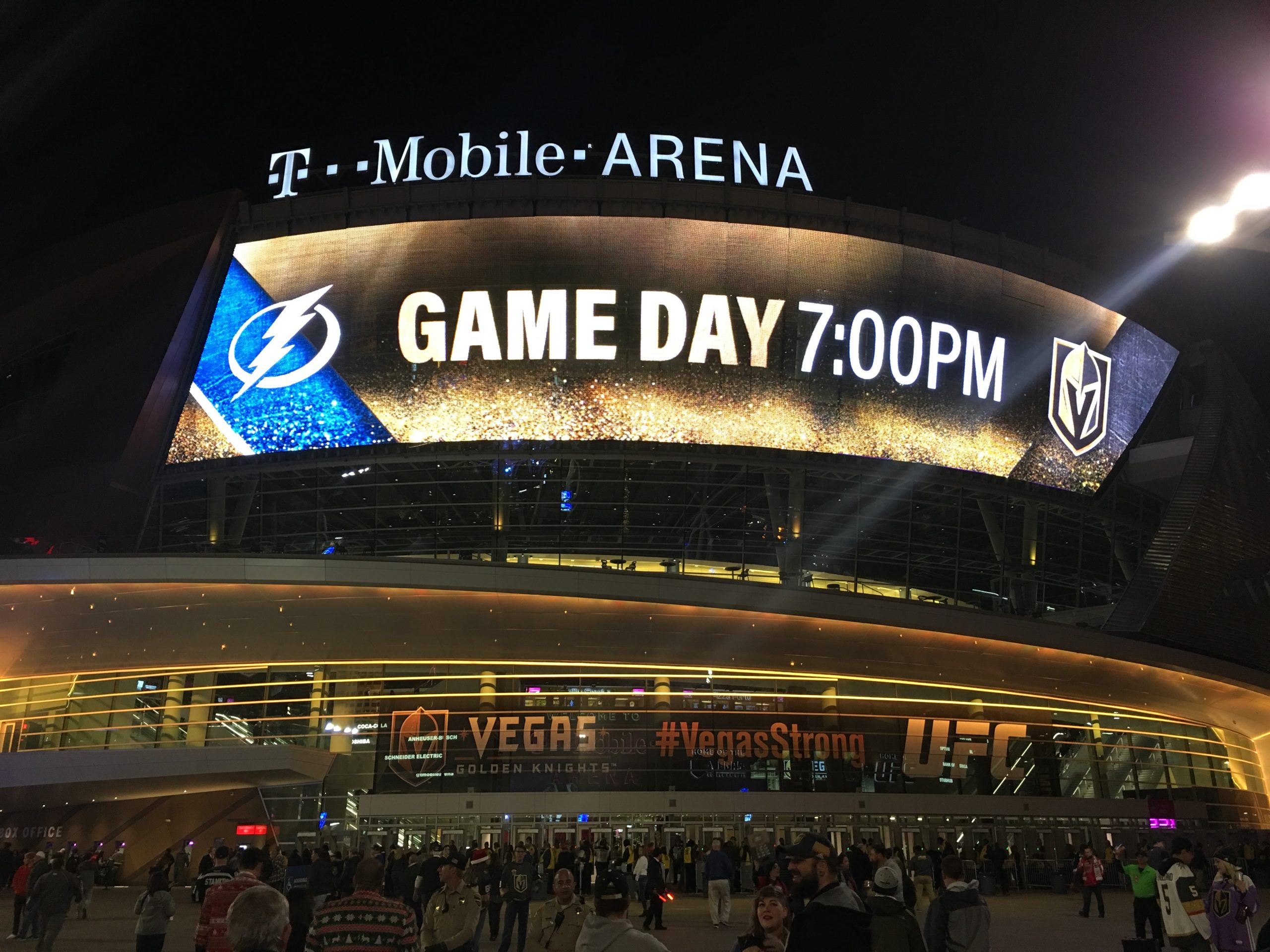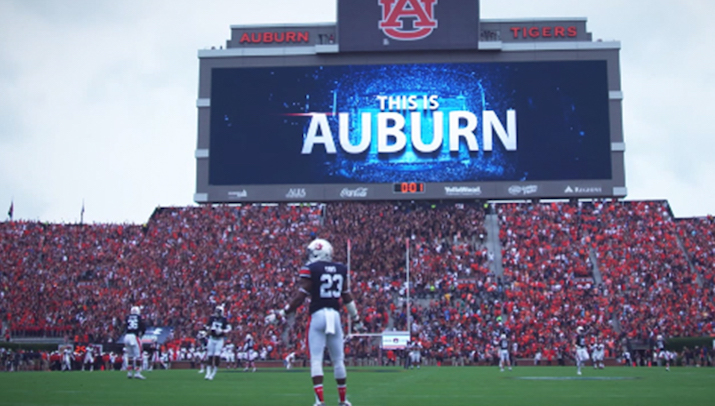Daktronics Aims To Put a Sound Peg Into a Square Screen
Goal is the ultimate, large-scale integration of sound and picture
Story Highlights
As demand increases for ever larger video screens and ever louder sound systems, competing real-estate needs occasionally create a multimedia traffic jam in sports venues. For much of the past two decades, Daktronics, which holds a nearly 60% market share in main video displays and integrated super systems in the pro-sports venues, has been working toward mitigating that conflict by integrating sound systems into progressively larger videoboards. Putting big sound into a big picture creates a unique onsite fan experience, but it also has to deal with a few challenges.

Daktronics’ John Olsen sees “untapped potential” for integrated audio systems in NBA- and NHL-arena videoboards.
“Basically,” says John Olsen, sales manager, audio systems, Daktronics, “what we’re doing is putting line arrays inside a huge display so that the effect is that of a point-source sound system. The goal of a point-source sound system is to create a coherent sound wave that reaches most of the seats in a stadium with minimal seat-to-seat variation. The effect feels like sound and picture are all coming from a single location.”
With screens as large as Daktronics’s nearly 900-sq.-ft. display at Auburn University’s Jordan-Hare Stadium and integrated PA systems reaching sound-pressure levels of 120 dB and higher, one main challenge has been achieving plausible synchronization between picture and sound. The light of the video image travels at 186 million miles per second while its associated audio plugs along at a mere 700+ mph.
The solution, says Olsen, is to delay the video by about 500 ms in the video processor. In football stadiums, which have on average the largest videoboards, that’s achieved by aiming at the 50-yard line as the target for the best sync for display/sound systems located at one end of the stadium.
“That minimizes the effect of the delay to the point where most people won’t notice it anywhere in the stadium, although it can’t eliminate it completely,” he says. “It’s a challenge with any large-venue sound system, along with loudspeakers installed for shadowed areas like concourses, concessions, suites, and other indoor or outdoor areas.”
Bigger and Bigger
Typical of the company’s hybrid AV installations is one installed this year at Northern State University’s new Dacotah Bank Stadium in Aberdeen, SD. It’s 23 ft. high by 59 ft. wide within an even larger scoreboard structure measuring 42 ft. high by 76 ft. wide. A Daktronics Sportsound 2000HD audio system is integrated with the video and scoring system.
Larger videoboards can accommodate the bigger sound systems needed for point-source, endfire PAs. That’s good because, in an era when ever greater low-frequency energy (LFE) has become a staple of the pop and urban music genres regularly heard in large sports venues, that means room for more subwoofers — generally the largest type of speaker enclosure.
All that LFE could potentially distort the picture by rattling the superstructure, although Olsen says that any such distortions can’t readily be picked up by the eye. For extremely large installations, such as the T-Mobile Arena in Las Vegas, where any number of internal or external vibration sources could create a potential image distortion, Daktronics has developed “stick” products: long, slender epoxy LED rods assembled with space between them but, from a distance, forming a coherent image.
Another solution is GKD MediaMesh, which Daktronics markets and installs in a partnership with GKD Metal Fabrics, with Daktronics supplying the LED portion of the product. MediaMesh is a textile-like weave of stainless steel and electronics that can be fitted over a solid façade or in front of windows — or a sound system — and provides image and sound while also letting the underlying architecture remain visible.
But, at such large scale, every solution also has its considerations. For instance, spacing between sticks in a display assembly has to consider not only image coherency at certain distances but also how that spacing affects the frequency response of the sound system behind it.
“Depending on the size of the sound system and its orientation to the listener, the LED façade may attenuate certain higher frequencies,” explains Olsen, who came to Daktronics with its acquisition in 2005 of Dodge Electronics, which specialized in PA systems for the collegiate and professional markets. “As you move to higher frequencies, the waves become smaller, and it takes less obstruction to block or attenuate them. With our LED Audio Facade product, we have created a happy medium for sound transmission. Really, the only issue is getting as much vertical resolution as possible and then letting our eyes put it all together. It’s a matter of finding the right balance between picture and sound.”

Daktronics’ LED solutions prevent image distortion due to LFE in the huge integrated video/audio scoreboard at Las Vegas’s T-Mobile Arena.
In fact, that’s part of the strategy for the future, with sports venues in all markets turning to AV to help welcome fans back to the stands: using large-scale audio and video to engage fans in ways that can’t be done at home.
To further that, Daktronics in July hired Diane Gonzalez-Ferranti as executive producer in its Creative Services division, which is tasked with helping the company grow its business in the digital-content-creation space across all markets, including sports. At the same time, Olsen says, integrated audio and video structures create cost-efficiencies that teams and venue managers need.
Because the largest venues can’t get that much larger, another part of future strategies for combined audio and video systems is arenas. Although Daktronics has screens in 11 NBA and 17 NHL arenas, none have integrated audio systems, a possibility that Olsen describes optimistically as “untapped potential.”

